You may have noticed how some air purifiers offer air cleaning with an advertised ultraviolet light (UV) feature. But what exactly does that mean? And what does UV light do in an air purifier?
In my detailed article, I’ll explain air purifier UV light basics, how it does (or doesn’t) help to clean your air, and much more.
Read on to learn all the facts you need!
Contents
What is a UV air purifier? What is UV for in an air purifier?
UV air purifiers use a motor-driven fan to pull air into the purifier and force it through the HEPA filter, trapping particles in the air in the filter. As the air moves through the purifier, a UV bulb shines on germs and microbes carried in the air, destroying them.
How does a UV air purifier work?
Ultraviolet light (UV-C light) is used in UV air purifiers to destroy airborne toxins and microorganisms such as mold, bacteria, and viruses. The goal is to reduce indoor air contaminants that are capable of being broken down by light – that is, the portion of airborne contaminants that cause sickness and other health or comfort problems.
The majority of air purifiers with a UV-C feature work as follows:
- An electric motor powers a fan that pulls air into the purifier and moves air with pollutants, germs, and more with it as it does.
- As the air passes through the purifier, if turned on, the UV-C light bombards the germs and viruses with its light that affects them, destroying them as it works.
- The air continues moving and passes through a pre-filter (optional) and a high-density High-Efficiency Particulate Air (HEPA) filter. This traps the main airborne contaminants such as pet dander, dust, and smoke particles. (Those aren’t affected by the UV-C light as they’re not organic like germs and other microorganisms).
What are the differences between a UV air purifier and HEPA air purifier with UV light?
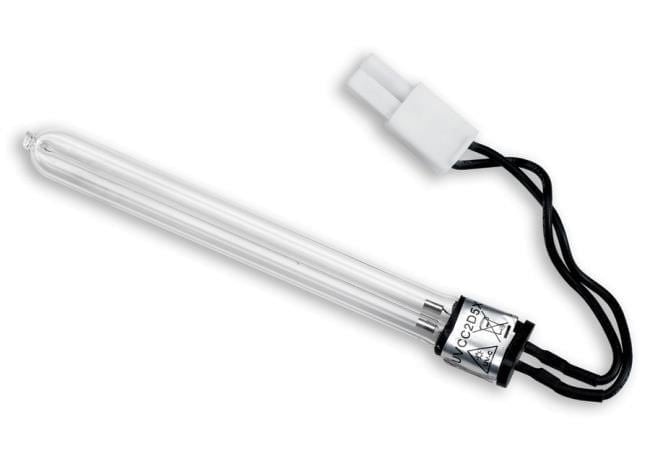
There’s one thing we need to clear up from the get-go: nearly always when we talk about a “UV air purifier”, what we mean is “an air purifier with UV” or similar. That’s because air purifiers primarily use filters to remove contaminants from the air such as dust, pet dander, and mold spores.
There are some (but not many) purifiers that only use UV light as their main function. When shopping for a purifier, 99.9% of the time you’ll find filter-based purifiers instead of UV-only models. They’re that uncommon.
The differences are:
- A true UV air purifier only circulates the air in a room and breaks down germs, microbes, and viruses in the air. That’s its real purpose.
- Most air purifiers with a High-Efficiency Particulate Air (HEPA) filter primarily remove airborne nasties like smoke particles, dust, dander, and mold spores, trapping them in the filter (in addition to capturing odors and other airborne vapors). The air purification UV light a second benefit in order to help clean the air even further, as UV light can’t break down non-organic materials like dust in most cases.
How does UV light kill germs and viruses?
Ultraviolet light isn’t only something that can give you skin damage – it’s also capable of affecting cells and organisms at the DNA level. Although it can be dangerous to humans in large quantities, one benefit is that it can destroy viruses and other harmful organic organisms.
As you probably already know, it’s not safe to be exposed to high levels of sunlight or direct UV light. The real reason behind this is that UV light can affect organic cell structures down to the DNA level! Yes, it’s that powerful.
As the air purifier moves air through it using the fan, the UV light breaks down the DNA of viruses, germs, and other microbes, basically “killing” them (rendering them harmless and no longer a threat).
Why is UV with titanium dioxide better in air purifiers?
When used with ultraviolet light, titanium dioxide assists with a catalytic chemical reaction meaning that it accelerates how the UV light works against organic matter like that found in pathogens, pollens, and mold spores. In other words, they work together to produce a reaction and effectively break down germs and microbes into inert (inactive) byproducts.
Are UV air purifiers effective?
Yes, UV air purifiers are effective but are not the main way to clean your air. That is, they are effective for removing potentially sickness-causing germs and viruses, but (1) only if used enough and allowed to cycle the air around you thoroughly, and (2) they complement but do not replace the job that HEPA filters do
Think of them as an improvement or even a “bonus” over only having a HEPA filter purifier – they’re not necessary to clean the air but are even better than a filter alone. However, for major germ problems or large areas, you’ll need other solutions or multiple purifiers to make a difference.
Do UV lights improve air quality? Does UV light remove odor?
Yes, absolutely! UV light basically sanitizes the air in rooms where it’s used, giving you fresh, healthy air and removing potential sickness-causing contaminants. UV light is also known to be able to break down some airborne volatile organic compounds (VOCs) and odors that cause discomfort and can bother your respiratory system, too.
However, you’ll need to use it the right way in order to get worthwhile results (I’ll cover this below as we go).
Are UV air purifiers safe?
Yes, UV purifiers or HEPA air purifiers with a UV feature are safe. You’re not exposed to UV light when it’s in use and there aren’t any harmful byproducts to breathe in.
I’ve had some readers ask me about this and some even thought that purifiers with a glowing light allowed light to escape. It simply is not true. While there may be some industrial or medical style units that give off significant amounts of UV light, that’s not the case for products you buy from retailers for your home.
Example of safety features related to the UV-C bulb of a popular air purifier. This GermGuardian AC4825 model has a safety guard that shields owners from being exposed to the UV bulb. Additionally, the light trim is simulated and does not allow UV light to pass through.
For example, purifiers you can buy for your home or office:
- Hide the UV bulb and/or use a shield to prevent exposure when changing the filters.
- Some have a safety switch that shuts off power when the filter cover is opened.
- Do not allow ultraviolet light to pass through the body, including illumination points used as on/off indicators.
In fact, in many cases, it’s not even possible to know the UV-C feature is turned on unless there’s an indicator light or other way to know.
When should I use UV light on air purifier?
No need to worry – this is the really easy part. For best results, you can leave an air purifier with UV light on all the time if you like. To thoroughly sanitize the air, you’ll have to allow the purifier to run most of the time if not all the time.
Similar to how a purifier’s HEPA filter cleans the air by continuously cycling a room’s air and removing contaminants as it works the same is true for this as well. Don’t keep the UV light on only for a short time. Instead, allow the purifier plenty of time:
- Running overnight is a great option.
- Running while you’re away from home working during the day.
- Or of course, 24/7 is fine too.
How long do UV bulbs last?
Many are rated for close to 12 months of use, but unfortunately, in the real world, bulbs don’t always make it that long. I think a more realistic estimate is close to 9 months.
Be sure to avoid jarring an air purifier while the bulb is on or still hot after use. Bulbs can be sensitive to impact, lessening their life span or even damaging them.
How much energy does an air purifier use for a UV light?
Unfortunately, owner’s manuals often don’t list the energy used by the UV-C feature. The good news is that in most cases it’s only a few watts so it’s so little you don’t have to worry about your electric bill.
Here’s an example for power measurements for the popular GermGuardian AC4825 model (power used with and without the ultraviolet light bulb turned on).
| Mode | Power Use, UV-C Off | Power Use, UV-C On |
|---|---|---|
| Off | 0 | 0 |
| High | 46.4W | 50.6W |
| Medium | 42.2W | 46.4W |
| Low | 38.6W | 42.7W |
As the UV-C feature uses only about 4W, there’s no need to worry if leaving it on all the time will affect your energy bill. Note that for larger models of purifiers, I’ve measured around 5W to about 8W used.
Do UV lights kill mold?
Closeup image of mold spores sometimes found in the air around you. Good news! UV light can indeed kill mold and help keep it under control.
While it’s harder for a smaller UV light to help keep mold under control in a home or building, the good news is that yes indeed – UV light does kill it! Bear in mind however that it depends on several things:
- The amount of UV light produced and whether or not the mold growth has direct exposure to it.
- The amount of time the UV light is used.
- Higher intensity UV lights are more effective than lower intensity ones.
In the case of an air purifier, because direct exposure to the area where mold is growing isn’t possible, that means you’ll only be able to use it to help with airborne mold spores. Air purifiers can definitely trap mold spores and help keep your air cleaner. Using the UV light won’t be of much use in that case like a separate & external light would be.
You can use the air purifier to help remove mold spores that result from the mold growing, but as is often the case, it’s critical to address the source of the mold and kill the mold where it’s at.
That’s one reason UV lights are often used inside heating, ventilation, and air conditioning (HVAC) systems.
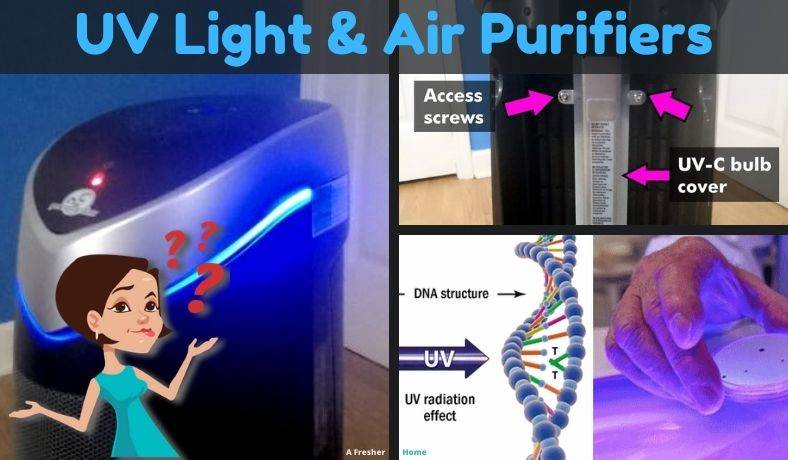


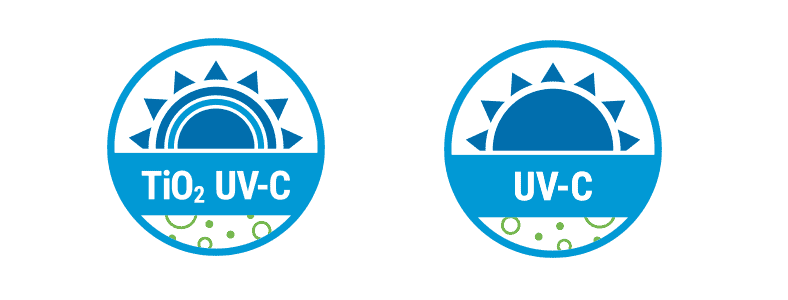
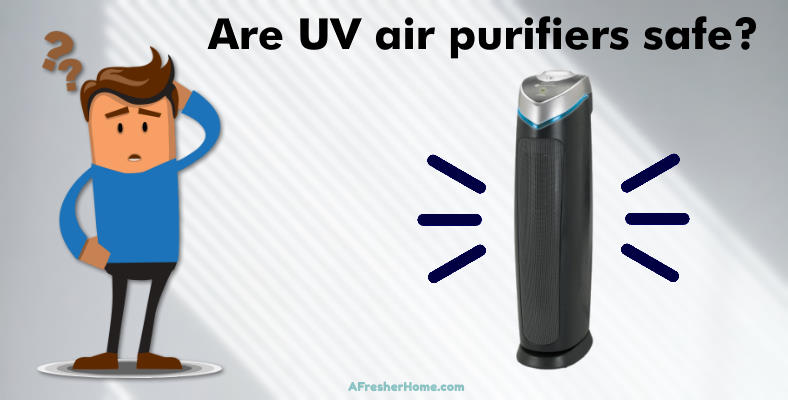
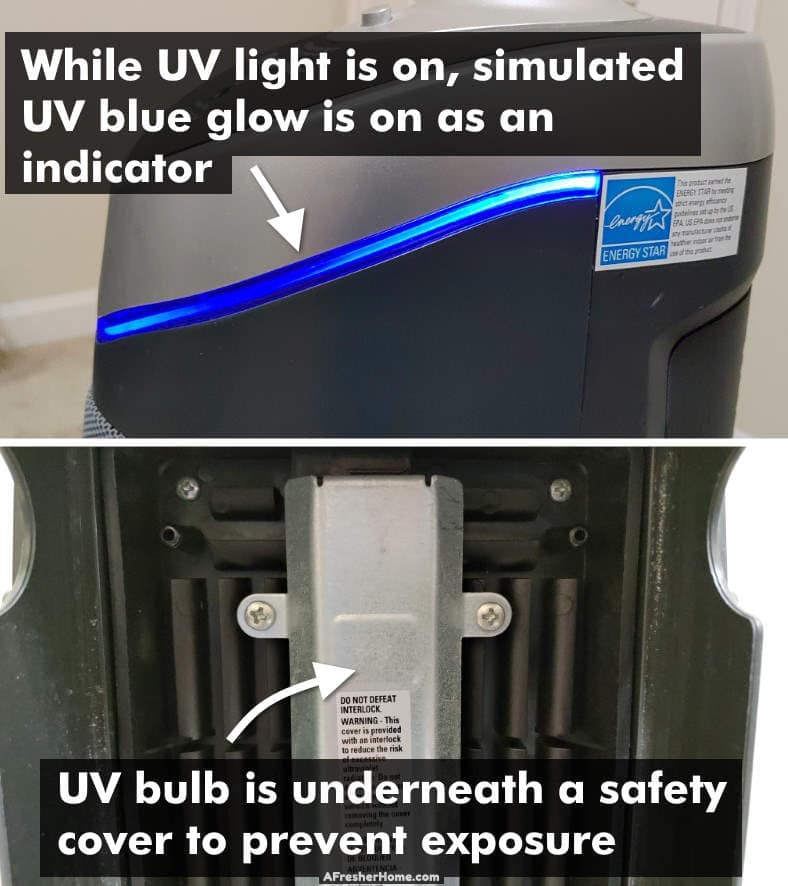
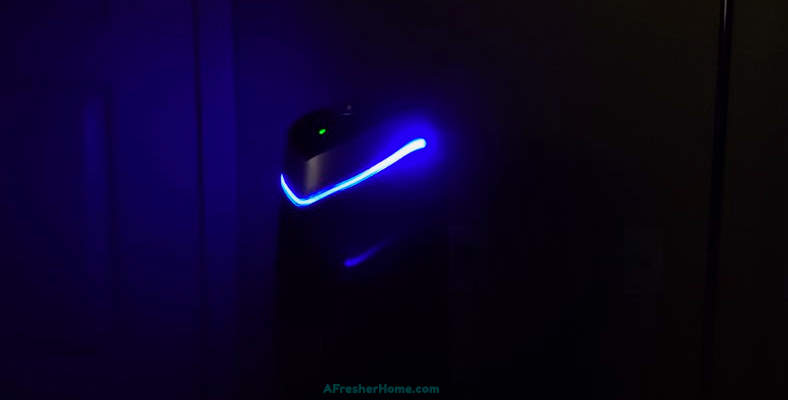

i was told in the instructions that UV light is dangerous for small animals. so I have this bonaire with uv light and I have a cat!
Hello, Mary. Yes, direct UV light exposure is harmful (with enough exposure) to both humans and animals. However, air purifiers with a UV bulb feature don’t allow direct exposure. Only the air passing through them is exposed to it – the light doesn’t escape to the outside.
Typically the owner’s manual refers to opening the unit with the light on which wouldn’t be a good idea. Under normal use, however, there’s nothing to be concerned about. Best regards!